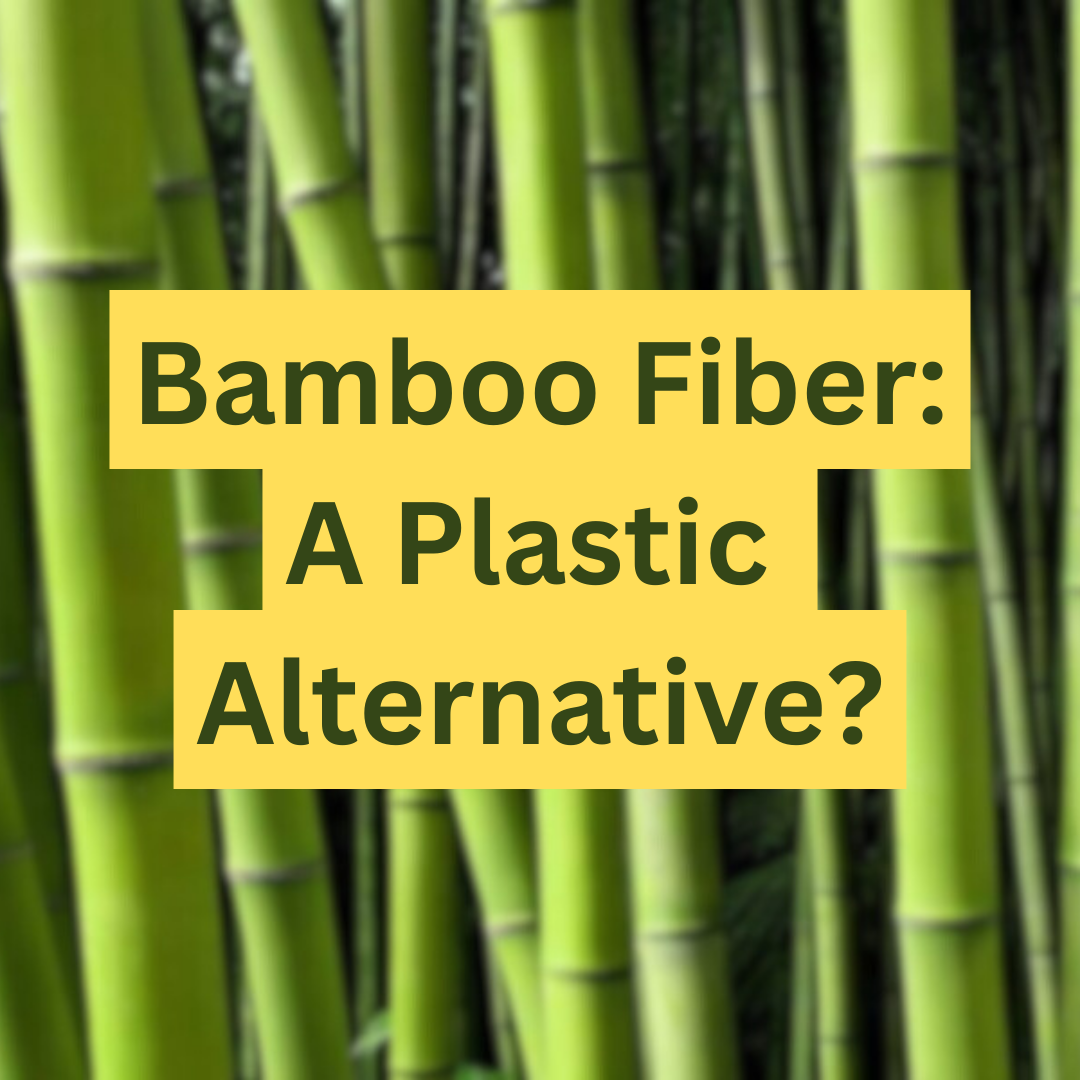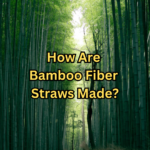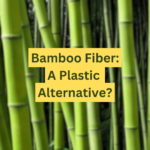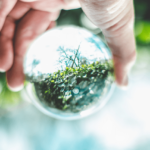
In This Article:
- Bamboo fiber is an eco-friendly alternative to plastic, offering a biodegradable solution that decomposes in compost conditions within 4-6 months, reducing environmental impact significantly compared to traditional plastic products.
- From rapid growth without the need for pesticides to a wide range of uses beyond straws, bamboo fiber is a versatile material that’s stepping up as a sustainable option for various household items and challenging the dominance of plastics and other eco-materials like PLA.
- Proper disposal is crucial for bamboo products to fulfill their eco-friendly potential; composting is the recommended method to ensure these items break down effectively and contribute to a healthier environment.
- Consumers can drive the demand for sustainable products by choosing bamboo options, thereby encouraging more businesses to offer eco-friendly alternatives and fostering a market that supports the planet’s well-being.
Bamboo Fiber: The Green Crusader Against Plastic
Imagine sipping your iced latte through a straw that, instead of outliving you, gracefully returns to the earth, enriching it. Welcome to the world of bamboo fiber, the renewable champion that’s giving single-use plastics a run for their money. This plant-based maverick is on a mission to turn our throwaway culture on its head, offering a guilt-free alternative to the plastic straw poking out of your cup.
The Bamboo Revolution: From Grass to Glass
Bamboo isn’t just for pandas; it’s the eco-warrior of the plant kingdom, sprouting up to a meter a day, ready to be transformed into the very utensils we eat with. This article will trace the remarkable transformation of bamboo from a hardy grass to the eco-chic straws and cutlery gracing our tables. We’ll delve into the science of biodegradability and uncover what really happens when bamboo doesn’t end up in the compost heap.
Beyond Straws: A Sustainable Symphony
But why stop at straws? Bamboo fiber is versatile, stepping boldly into realms dominated by plastics and even other eco-contenders like PLA. We’ll compare these materials head-to-head, evaluating everything from environmental footprints to breakdown behaviors. By the end of this journey, you’ll be armed with the knowledge to make informed choices that favor the earth, ready to embrace bamboo in more ways than one.
Bamboo Fiber: The Unsung Hero of Sustainable Living
The Environmental Culprit: Traditional Plastic Straws
Let’s kick things off with a not-so-fun fact: those plastic straws you use to slurp up your milkshake? They’re part of a massive problem. We toss millions of them every day, and they end up in landfills, oceans, and beaches. They take up to 200 years to break down, and even then, they just splinter into microplastics, wreaking havoc on marine life and ecosystems. It’s a real mess.
Enter the Hero: Bamboo Fiber
Now, pivot to bamboo fiber. It’s like that quiet kid in class who turns out to be a superhero in disguise. This stuff is the real deal in the sustainable materials league. It comes from one of the fastest-growing plants on Earth, which means it’s ready to replace plastic without even breaking a sweat. Plus, it doesn’t need pesticides or fertilizers to thrive. I mean, talk about a green thumb!
Biodegradable Brilliance: The Lifecycle of Bamboo
Here’s where bamboo really shines. After you’ve used that bamboo straw to sip your favorite drink, it begins a journey back to Mother Earth, decomposing within a few short months if tossed into a compost bin. That’s a stark contrast to its plastic counterpart. And the best part? It’s not just biodegradable; bamboo is also compostable, meaning it doesn’t just disappear, it contributes to nutrient-rich soil. It’s a circle-of-life thing – and it’s beautiful.
From Plant to Product: The Bamboo Fiber Journey
Bamboo: The Speedy Grower
Let’s talk about bamboo’s growth game—it’s like the sprinter of the plant world. This grass (yep, it’s not a tree) can shoot up to an astonishing 91 centimeters in just 24 hours. That’s fast. And because it grows so quickly, it doesn’t need any of those nasty chemicals to help it along. We’re looking at a superstar of sustainability that can be harvested without harming the environment. It’s the kind of crop that farmers love: low maintenance, high yield, and it even regenerates from its own roots—no replanting necessary.
Transformation: From Stalk to Straw
Ever wonder how a sturdy bamboo stalk becomes a straw? It’s a bit of magic—well, more like eco-engineering. First, they cut the bamboo into strips, which are then boiled in a solution (naturally, no harsh chemicals here) to remove the sugars and oils. After drying out, these strips are crushed and pressed into a mold. Voilà, you’ve got yourself a bamboo straw. It’s a clean process, from start to finish, with none of that carbon guilt you get from plastics.
Composting: The Final Act of Bamboo
Here’s the part that gets me excited: the disposal. Once you’re done sipping through your bamboo straw, the show isn’t over. If you toss it into a compost bin, it breaks down and becomes part of the soil in just six months. It’s like sending it off on a farewell tour back into the arms of nature. This is a stark contrast to the ‘forever-and-a-day’ goodbye we say to plastics. So, if you’re keeping score: Bamboo fiber starts as a plant, lives as a product, and retires as a nutrient for the next plant. Now that’s a full circle worth celebrating.
The Compelling Case for Bamboo Fiber
Bamboo vs. Plastic: The Showdown
When you pit bamboo fiber against traditional plastic, it’s like comparing a superhero to a villain in the sustainability saga. While plastic lounges around for centuries, bamboo fiber items strut back to the soil within months, leaving no trace. In disposables, bamboo doesn’t leach toxic chemicals as it degrades, unlike plastic, which can release bisphenol A and other unfriendly guests into our environment. It’s not just about lasting less; it’s about impacting less.
Biodegradation: Bamboo’s Encore
The biodegradation process for bamboo is a testament to its eco-friendliness. Under the right composting conditions, bamboo fiber products break down and become part of the compost, contributing to new plant growth. It’s a seamless performance, with bamboo playing its part perfectly in nature’s cycle. Just add water, soil, and a little time, and bamboo bows out, enriching the very earth it came from.
The Misstep of Misdisposal
Now, let’s say bamboo fiber products end up where they shouldn’t—like in a landfill or the ocean. Hypothetically, if you toss your product into the trash, it won’t break down as it’s designed to in a compost environment. It’s not the bamboo’s fault—it’s a misplaced cast member, yearning for the compost bin stage. So, the moral of the story? Proper disposal is key. Treat bamboo right, and it’ll treat the earth right, too.
Bamboo vs. PLA: The Eco-Friendly Showdown
PLA Explained: The Contender
PLA, or polylactic acid, steps into the ring as a plastic alternative with a plant-based pedigree. It’s a bioplastic derived mostly from fermented plant starch, like corn. You’ll find it in everything from clear cups to biodegradable medical implants. It’s clear and looks like plastic, but here’s the kicker: it’s designed to biodegrade under the right conditions.
The Environmental Tug-of-War
Here’s where the match heats up. Bamboo fiber and PLA both claim eco-victory, but their paths diverge sharply. Bamboo fiber boasts a quick breakdown, returning to the earth without a fuss. PLA, however, is a bit more high-maintenance, requiring industrial composting to break down properly. If it ends up in a regular landfill, it’s more of a slow fade than a vanishing act, which can take anywhere from 100 to 1,000 years—no better than conventional plastics in this scenario.
Weighing the Scales of Green
So, let’s break it down: Bamboo fiber is the low-tech, all-natural champion, ready to decompose in your home compost. PLA, while also plant-based, needs a specialized setup to truly return to the earth. Bamboo is like that reliable friend who helps you move without expecting anything in return. PLA is the friend who’ll help, but only if you drive them home. Both are steps in the right direction, but bamboo doesn’t need the extra lift to make it back to nature.
The Lifecycle of Bamboo Fiber Products
From Cup to Compost: Bamboo’s Beginnings and Bows
Imagine you’re holding a bamboo cup. It’s sturdy, feels good, right? Here’s the journey it’s been on: grown in a lush forest, harvested, pulped into fibers, and shaped into the vessel in your grip. It’s had a life already, and guess what? It’s got a plan for a graceful exit. Use it, wash it, and when it’s time, bid it farewell into the compost bin. It’s ready to decompose without clogging up the planet.
Bamboo’s Breakdown: The Countdown
Now, you might wonder, how long does bamboo take to break down? Picture an apple core rotting in fast-forward. Given the right composting conditions, your bamboo cup starts breaking down in as little as 4-6 months. It’s eager to get back to the earth, becoming part of the soil. It’s not lounging around; it’s re-entering the cycle of life, quick and clean.
Disposal Done Right: Bamboo’s Biodegradable Beat
But here’s the rub: bamboo’s biodegradability is a superpower that needs the right setting to shine. Toss it in the trash, and it’s like handcuffing Houdini. This hero needs a compost bin to work its magic, not a plastic bag. So, when it’s time to let go, make sure you’re giving your bamboo product the compost bin finale it deserves. That’s how you close the loop, making sure what comes from the earth truly goes back to it.
When Good Intentions Go Awry: Improper Disposal Impacts
The Backfiring of Bamboo Misplacement
Hypothetical scenario: you’ve just finished your drink, and without a second thought, you toss your bamboo straw into the trash. Seems harmless, right? Wrong. That’s where good intentions can lead to not-so-good endings. Improper disposal means that bamboo fiber products can end up in landfills just like their plastic cousins, squandering their biodegradable talents and sitting snug in a pile of waste, potentially for years.
The Ripple Effect on Nature
When these eco-friendly products are dismissed to landfills, they can’t decompose the way they’re supposed to. The result? They take up space, and if they find their way into natural habitats, they can cause confusion and harm to wildlife. Birds, fish, and other critters don’t know bamboo from plastic. They see it as a potential meal or part of their habitat, which can lead to harmful consequences.
Eco-Friendly Disposal: Do It Right
Always dispose of your bamboo products in a compost bin. It’s a simple act, but it makes all the difference. If you don’t have one, start one. It’s easier than you think and there are plenty of guides out there to get you going. Teach your friends, your family, your neighbors. Spread the word like you’d share your favorite life hack. Because, in a way, composting is a life hack—for the planet.
Beyond Straws: The Versatility of Bamboo Fiber
Bamboo’s Big Break: More Than Just Straws
Let’s broaden our horizons—bamboo fiber isn’t a one-trick pony. It’s crafting a revolution, turning into everything from plates to toothbrushes. That’s right, this warrior grass is pushing the boundaries, challenging the reign of plastics in our homes. It’s not just about sipping drinks; it’s about dining in style with bamboo cutlery, stirring your coffee with a bamboo stirrer, and even wiping your mouth with a bamboo napkin.
Rethinking Household Habits: Bamboo Takes Charge
Think of any plastic item around your house. Got it? There’s a bamboo alternative out there. Storage containers, kids’ toys, and even your soft bed sheets can be made from bamboo fibers. It’s a swap waiting to happen, and it’s not just swapping like for like—it’s upgrading. Bamboo fiber comes with a promise: to serve and then silently step aside, back into the earth, without a fuss.
Innovation Station: Bamboo’s Future Looks Bright
The future? It’s bamboo’s playground. Innovators are already experimenting with bamboo fiber to replace even the most unexpected items. Imagine your car’s interior, the dashboard, the seats, all bamboo-based. The market’s expanding, and it’s not just about being green for the sake of it; it’s about superior products with a lifecycle that respects our planet. That’s a future worth investing in.
Making the Switch: Embracing Bamboo in Daily Life
Seize the Day with Bamboo
Ditching plastic for bamboo fiber products in your daily routine is simpler than you think. Start with the items you use most. Swap out that plastic toothbrush for a bamboo one. Next time you pack a lunch, wrap it up in bamboo fiber-based cling film. It’s not just a choice; it’s a statement that you’re part of the change.
Your Power: The Consumer’s Vote
Every time you pick a bamboo product off the shelf, you’re casting a vote for the world you want to live in. This is consumer power in its purest form. By choosing bamboo, you’re nudging businesses to think sustainably, pushing for products that respect our planet. It’s a ripple effect that starts with you.
Join the Bamboo Movement
Now, it’s your turn. Imagine a future where the norm is products that give back to the earth, not take from it. Start small, think big, and make the switch to bamboo. It’s a step towards a greener lifestyle that’s waiting for you to take the lead. Let’s do this—for our homes, our wildlife, and our future.
A Product in the Marketplace
Check out these Bamboo Fiber Straws on Amazon as an example. They comply with ASTM D6400 & D6868 standards and are a great example of how well these products can go head to head with plastic.
Frequently Asked Questions
Why Should I Even Care About Bamboo Fiber?
Oh, let me tell you, when I first discovered bamboo fiber, it was a game-changer. Bamboo fiber is the eco-warrior that’s going to save our lazy Sundays from drowning in plastic waste. It’s not just about feeling good; it’s about doing good. The straws, the plates, even the toothbrush in your bathroom, they can all be bamboo-based. And when they’ve done their duty, they bow out gracefully, decomposing like a leaf falling onto the forest floor.
Is Bamboo Really Better Than Plastic?
Yes, bamboo knocks plastic out of the park! I felt a huge relief switching over. Bamboo grows faster than a teenager, doesn’t need nasty pesticides, and when you’re done, it’s like it was never here—no toxic footprint left behind. Plus, it doesn’t stick around for centuries like plastic, which is a win for our planet.
What’s the Real Deal with Bamboo and Landfills?
Here’s the hard truth: bamboo needs to be composted to work its magic. If it ends up in a landfill, its potential is wasted. It takes a bamboo product around 4-6 months to break down in a composting environment, but in a landfill, it’s shackled by conditions that don’t let it degrade as it should.
How Does Bamboo Fiber Compare to PLA?
Bamboo fiber and PLA are both vying for the environmental crown, but they’re like apples and oranges. PLA needs industrial composting and can take centuries in a landfill, which had me raising my eyebrows. Bamboo, on the other hand, is happy to degrade in your backyard compost. It’s a no-brainer for me.
Can I Just Throw My Bamboo Products in the Trash?
If you toss bamboo products in the trash, they’ll likely end up in a landfill, and that’s a real waste of their talents. It makes me cringe thinking about it. To see them truly shine, compost them. It’s a small effort for a big environmental high-five.
Does Bamboo Fiber Biodegrade Safely and Not Leave Behind Any Harmful Chemicals?
Absolutely, bamboo fiber biodegrades safely and it’s one of the reasons my heart feels lighter every time I use it. It returns to the earth without any toxic chemicals, just breaking down into natural elements. No harmful residues, no lasting pollutants. It’s like it thanks the planet for the loan of its resources by leaving it as it found it—clean and green.
So Bamboo Fiber is both compostable and biodegradable?
Yes, bamboo fiber is both compostable and biodegradable. This means it can break down into natural elements in a compost environment, enriching the soil without leaving harmful residues. Bamboo’s ability to decompose under the right conditions—typically involving the presence of microorganisms, moisture, and oxygen—makes it an environmentally friendly alternative to non-degradable materials like traditional plastics.
Will Bamboo Fiber break down in non industrial composting environments?
Yes, bamboo fiber will break down in non-industrial composting environments, such as a home composting setup. It’s designed to be composted at a lower temperature than industrial composting requires. The time it takes to decompose can vary, but in a well-maintained home compost, bamboo can break down in approximately 4-6 months. The key factors for effective composting at home include the right balance of green and brown organic materials, sufficient moisture, and regular turning of the compost to provide oxygen to the microorganisms that facilitate the breakdown of the materials.
What happens to a bamboo fiber straw if I bury it in the ground?
If you bury a bamboo fiber straw in the ground, it will biodegrade over time. The process is natural and eco-friendly, allowing the straw to decompose without leaving harmful residues behind. However, the rate of decomposition will depend on various factors such as soil composition, moisture, and the presence of microorganisms. In ideal composting conditions, the straw could break down in as little as 4-6 months, but it may take longer in less than ideal conditions. It’s a cleaner, greener goodbye compared to plastics, which can linger for centuries.
What Can Bamboo Fiber Really Be Used For?
You name it, bamboo fiber can be turned into it. I felt like I hit the jackpot when I found out about bamboo fiber bed sheets. From cutlery to containers, and even clothing, bamboo is the versatile hero we’ve been waiting for.
Are There Any Downsides to Bamboo Fiber Products?
Honestly, the only downside is that bamboo fiber products can be a bit pricier and they’re not as widely available as plastic—yet. But every time I spend a little extra, I know I’m investing in our planet’s future, and that feels priceless.
What’s My First Step to Making the Bamboo Switch?
Grab something simple, like a bamboo straw or another set of bamboo utensils for your next picnic. I felt a buzz of excitement when I made my first bamboo purchase—it’s like joining an exclusive club that’s open to everyone who cares about the earth.
How Can I Influence the Market with My Choices?
Every bamboo fiber product you buy is a vote for sustainability. I get a thrill knowing I’m part of a movement that’s pushing companies to go green. The more we buy, the more they’ll make—it’s consumer power at its finest.
Now, are you ready to make the switch? Imagine the change you’ll be part of. Grab that bamboo toothbrush, sip from a bamboo straw, and let’s make a difference together.
References



